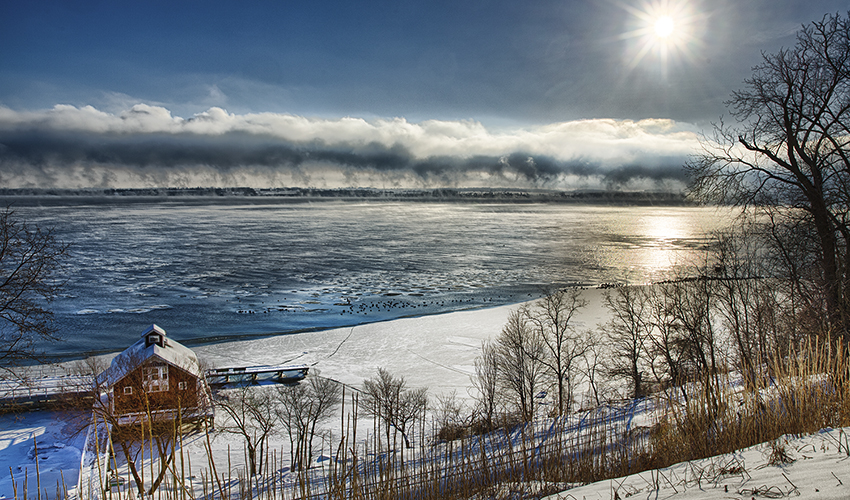
HWS News
21 November 2016 • Faculty • Research Laird, Metz Publish Articles on Lake Effect
Professor of Geoscience Neil Laird and Assistant Professor of Geoscience Nick Metz have co-authored two scientific journal articles recently published in the Bulletin of the American Meteorological Society and International Journal of Climatology.

Their article, The Ontario Winter Lake-effect Systems (OWLeS) Field Project, details an extensive scientific field project that brought together several colleges, universities and agencies from across the country to collaborate on winter weather research in the Lake Ontario and Finger Lakes regions.
"The article provides an overview of the OWLeS field project and future pathways for research," says Metz. "It was the largest project of its kind and so much data was collected that people will be analyzing it for years to come."
The article outlines how the project collected unprecedented observations of highly complex lake-effect snow events by dispensing instrumentation for measuring atmospheric data, deploying Doppler on Wheels radar, using the University of Wyoming King Air research aircraft, and implementing other data-collecting efforts. The team also collaborated with the National Weather Service to enhance data analysis, modeling and forecasting.
"There were about 10 HWS students involved with the field research and another 12 to 15 HWS students involved with the data analysis," says Metz. "They have been able to work with some unique datasets and try to unravel the processes that contributed to heavy, often difficult to forecast, lake-effect snow events. Our students have been able to step out beyond the classroom and do hands-on research with faculty. The students universally rose to the challenge."
For example, during lake-effect snow events, HWS student researchers worked shifts in extreme cold and wind to launch weather balloons at locations across western and central New York to collect meteorological data such as wind speed and temperature throughout the atmosphere.
"Having never worked on a field project like this that ran continuously for six weeks, our students worked diligently and professionally alongside researchers and forecasters with many years of experience," says Laird. "The students that have continued conducting research on lake-effect snow storms after the field project are finding new results about these storms and sharing their findings with the atmospheric science community at conferences."
The climatology journal article, Climatology of cold season lake effect cloud bands for the North American Great Lakes, uses satellite imagery to provide a comprehensive climatological description of the seasonal and interannual variability of lake effect cloud bands and provide an unmatched database related to the occurrence of cold-season lake effects in the Great Lakes region. The study found that across the cold season, about 60 to 80 percent of days per month have lake effect clouds over some portion of the Great Lakes region and on lake effect days, nearly 75 percent had lake effect activity present over several lakes simultaneously.
"This shows that lake effect is a substantial part of the wintertime Great Lakes weather," Metz says. "And it quantifies how much lake effect varies in any particular winter and how much it varies from one winter to another."
The article also involved student researchers from the Colleges' Summer Research Program. Student co-authors include: Lauriana Gaudet, who attended Lyndon State College; Colton Grasmick, who attended University of Northern Colorado; Lindsey Higgins, who attended Buffalo State College; Carlee Loeser, who attended Salisbury University, and Dave Zelinsky, who attended Purdue University.
"The student involvement on this project was substantial and included many students spanning across several summer research programs at HWS," says Laird. "The wonderful thing about this project is that it provides a wealth of information to initiate new research projects in the future."
Metz adds: "This project is a great example of students working closely with faculty on a substantial research project. HWS is a very unique institution where students can start very early as undergraduates working on research and meaningfully compliment their academic year studies."
